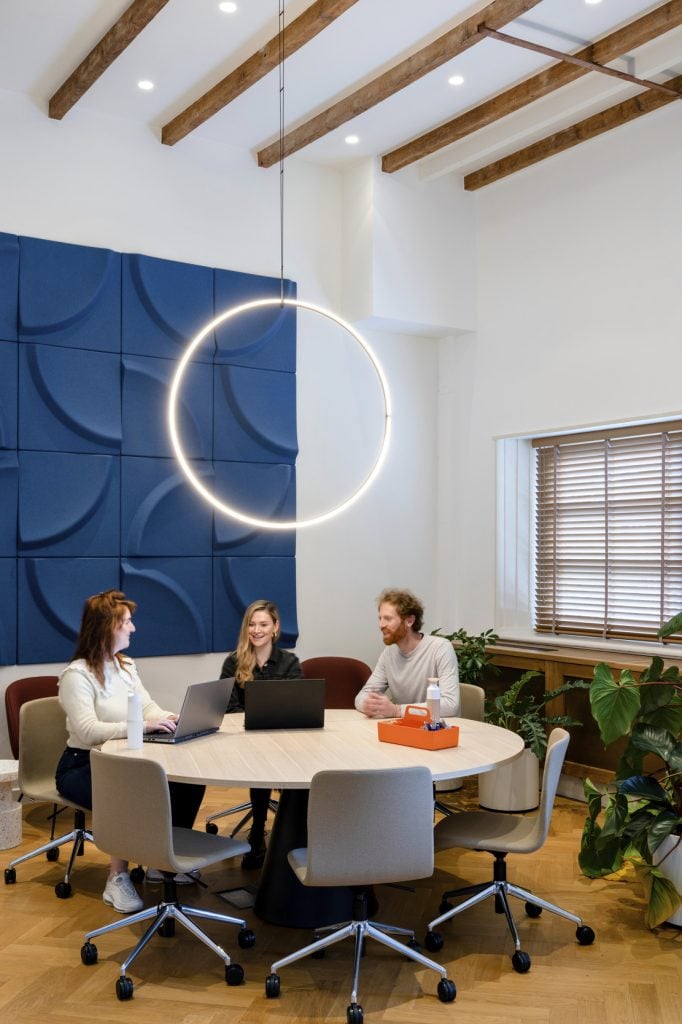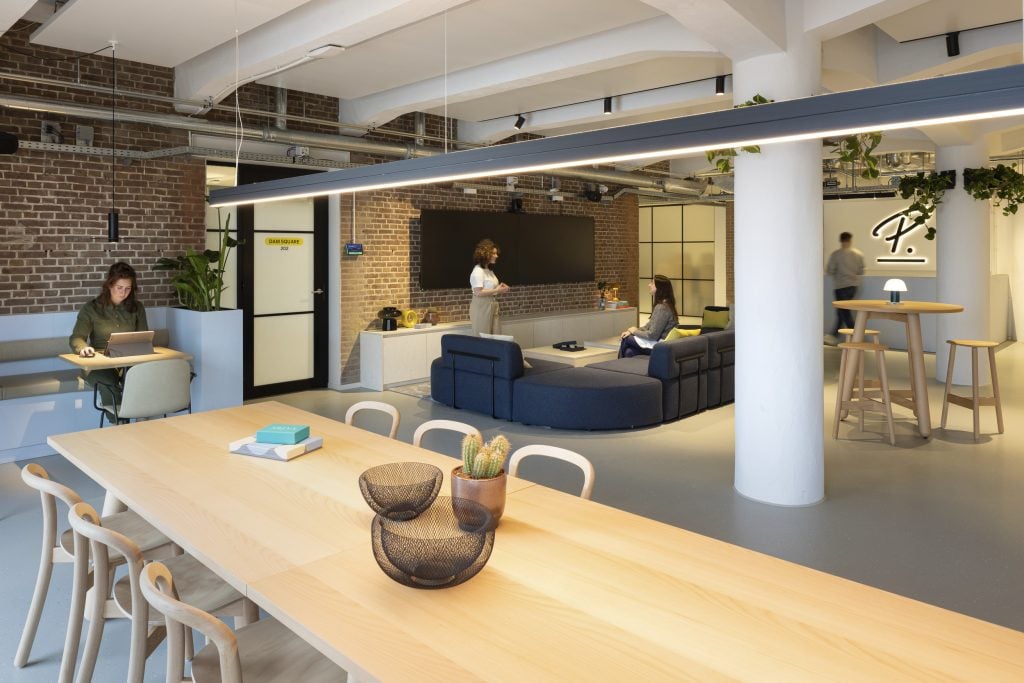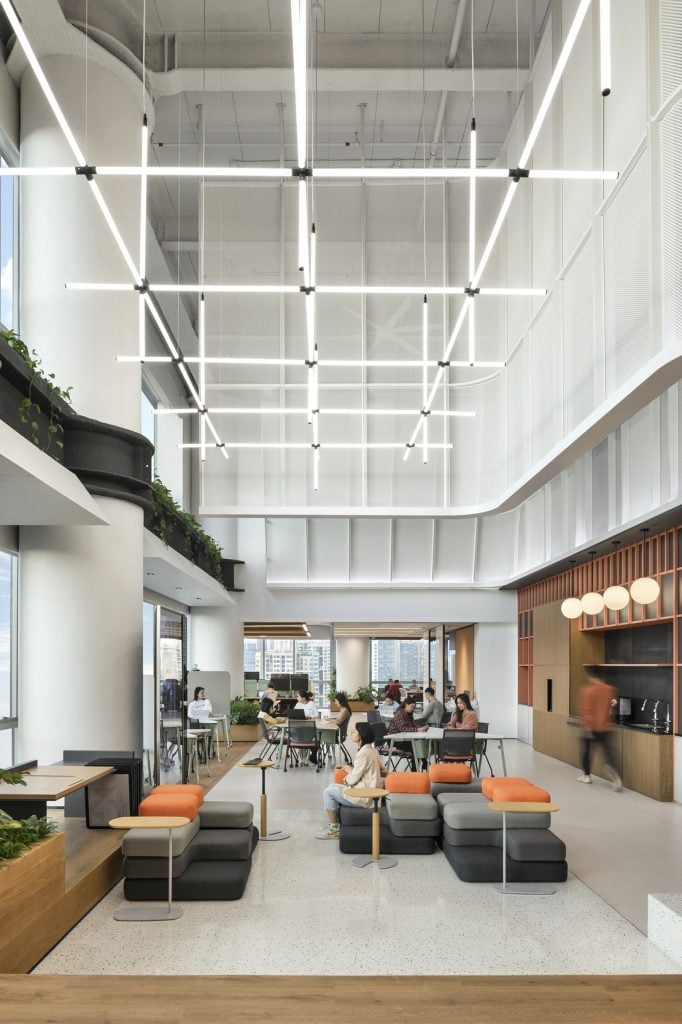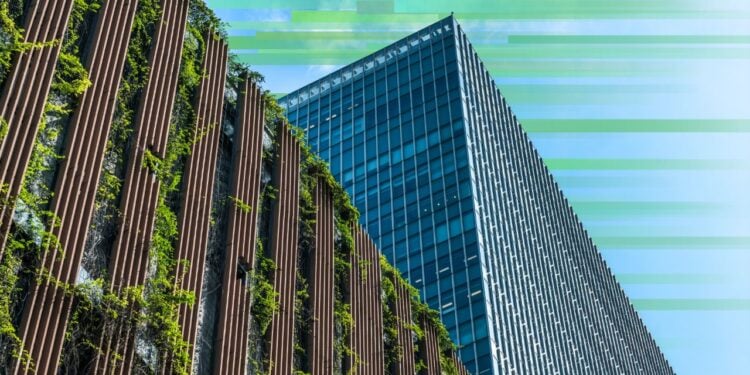- Regulatory pressures, investor demands, and environmental consciousness are driving corporations to adopt eco-centric commitments to reduce carbon emissions and conserve natural resources.
- Environmental certifications like LEED and BREEAM are evolving to focus more on carbon emissions, alongside the rise of new frameworks such as NABERS.
- The integration of data analytics and smart building technologies is essential for carbon management and sustainability in the built environment.
This article was written by M Moser Associates’ Sam Allen for Work Design Magazine.
The past year has been marked by a more profound commitment to understanding and mitigating environmental impact. A blend of factors, including regulatory frameworks, investor demands, employee advocacy and a growing global environmental consciousness drove this shift.
Corporations increasingly utilize third-party metrics, like CDP disclosure reports and Science-Based Targets, to quantify their environmental footprint.
These metrics are leading to new demands on the design, engineering and construction sectors to align with these eco-centric commitments, especially reducing carbon emissions and conserving natural resources.

Time to Rethink Certifications?
Environmental certifications, including well-established programs like LEED and BREEAM, are undergoing positive changes to address modern sustainability challenges, particularly carbon emissions. These adaptations signify a commitment to staying relevant and effective amid evolving environmental concerns.
As a proud Proven Provider of LEED certification services, we acknowledge and support the forthcoming LEED v5 revisions and expected BREEAM v7 updates, reflecting a commendable shift towards a more carbon-centric approach.
Simultaneously, the growth of frameworks like NABERS, focusing on real-world energy and operational carbon metrics, contributes valuable perspectives to the broader sustainability conversation.

The Future of Materials and Digital Passports
The conservation of our planet’s natural resources is the main driver behind M Moser’s and our clients’ increased focus on supporting the circular economy.
We are seeing recycled materials gain traction in our work. Recycled plastic, for instance, is being used to create many materials for the built environment, from flooring to tabletops and even structural elements.
We are focused on using recycled materials that are, first and foremost, durable, but also recyclable at the end of their life. Recycled glass is another material we use more of. It is also one of the only materials that can be recycled indefinitely if kept pure. It can be used to produce tiles and countertops, and as an aggregate in concrete.
In addition to recycling, we are engaging more with suppliers that work with bio-based materials. Bio-based materials are derived from natural sources, such as plants, fungi and algae, providing biodegradable and regenerative alternatives to traditional construction materials.
In addition to recycling, we are engaging more with suppliers that work with bio-based materials.
One example is mycelium, the root structure of mushrooms. Mycelium can be grown in containers that help manufacturers create specific shapes — used as acoustic panels and even flooring.
Mycelium grows quickly, is low in embodied carbon and provides excellent insulation properties, making it an attractive option for green building projects.
However, a few durability issues will need to be resolved before we see this being used at scale for commercial spaces.
Another material we are exploring for constructing partitions (which can be very carbon-intensive) is hempcrete — a mixture of hemp hurds and lime. Hempcrete is carbon-negative over its life, as hemp plants absorb carbon dioxide during growth, and the material sequesters this carbon throughout its use. It is lightweight, breathable and has good thermal mass, making it ideal for insulation.
Finally, another trend we fully support is the proliferation of material passports, which are digital documents that contain details of a material’s origin, characteristics, performance metrics and chain of custody.
These documents help facilitate reuse and recycling, making specifications for circular and more sustainable offices easier.

Data Analytics and Smart Building Integration
A focus on carbon management is propelling the integration of data analytics in workplace designs, aiming to track and reduce emissions over time. This trend is complemented by the advancement of smart building technologies and AI (artificial intelligence), which, when paired together, can automate and fine-tune building operations.
A focus on carbon management is propelling the integration of data analytics in workplace designs, aiming to track and reduce emissions over time.
This can lead to sustained energy reduction, greater operational efficiency, financial savings and simplified reporting processes. It can also encourage more environmentally conscious behaviors in employees.
Technologies such as smart building systems and IoT (Internet of Things) devices measure energy use, air quality, lighting and noise levels, and control systems that influence these outcomes (ventilation, lighting, on/off switches).
These systems can adapt to changes in occupancy and environmental conditions in real-time, ensuring optimal comfort while minimizing energy consumption. As these technologies and systems are still nascent, there are challenges with implementing them at scale.
Incorporating a team with a Master Systems Integrator (MSI) is crucial for successful project delivery. Fundamentally it ensures all the systems can communicate and work with each other and with the base building systems and network.
Additionally, collaboration tools and platforms can support remote work. This can support flexible working, enable companies to build their teams without increasing their real estate and reduce Scope 3 Category 7 – Employee Commuting for those using the GHG (greenhouse gas) Corporate Standard.
Document management systems and cloud computing further support sustainability by reducing the need for paper and enabling more efficient resource management.
Moreover, data analytics and AI play crucial roles in sustainable workplaces. They analyze energy use patterns and predict future trends, allowing for proactive adjustments.
These digital solutions contribute to a greener planet and enhance employee wellbeing and productivity by creating more responsive and comfortable work environments.
Embodied Carbon & the Total Carbon Footprint
The increasing emphasis on carbon has shed a large spotlight on the measurement and accounting of embodied carbon. This continues to steer clients and designers toward circular methodologies and sustainable material choices.
Given that a significant portion of global carbon emissions (approx. 11%) are attributed to embodied carbon in buildings, our role as designers and builders who specify these items is crucial in mitigating climate change.
Given that a significant portion of global carbon emissions (approx. 11%) are attributed to embodied carbon in buildings, our role as designers and builders who specify these items is crucial in mitigating climate change.
Firstly, we need to know the carbon footprint of materials.
Many building materials, like concrete and steel, are well-known, however, many interior materials, like furniture and MEP systems, are not. Estimates suggest they could contribute significantly to a build’s total carbon footprint.
Many manufacturers and AEC firms are building libraries to help estimate these numbers and make them public. Then comes the careful selection of materials.
Opting for materials with lower carbon footprints, such as recycled materials, bio-based products and locally sourced supplies can significantly reduce emissions.

Design practices such as modular construction and design for disassembly also contribute by minimizing waste and enhancing the potential reuse of components at their end of life.
Additionally, leveraging advanced technologies like building information modeling (BIM) can improve the efficiency of the construction process and material utilization, further cutting down embodied carbon.
Finally, an emphasis on retrofitting existing structures instead of new construction avoids the emissions from deconstruction waste and new materials.
Collectively, these strategies empower us to move towards more sustainable design and construction practices, helping support a more carbon conscious future.


 Dr. Gleb Tsipursky – The Office Whisperer
Dr. Gleb Tsipursky – The Office Whisperer Nirit Cohen – WorkFutures
Nirit Cohen – WorkFutures Angela Howard – Culture Expert
Angela Howard – Culture Expert Drew Jones – Design & Innovation
Drew Jones – Design & Innovation Jonathan Price – CRE & Flex Expert
Jonathan Price – CRE & Flex Expert














